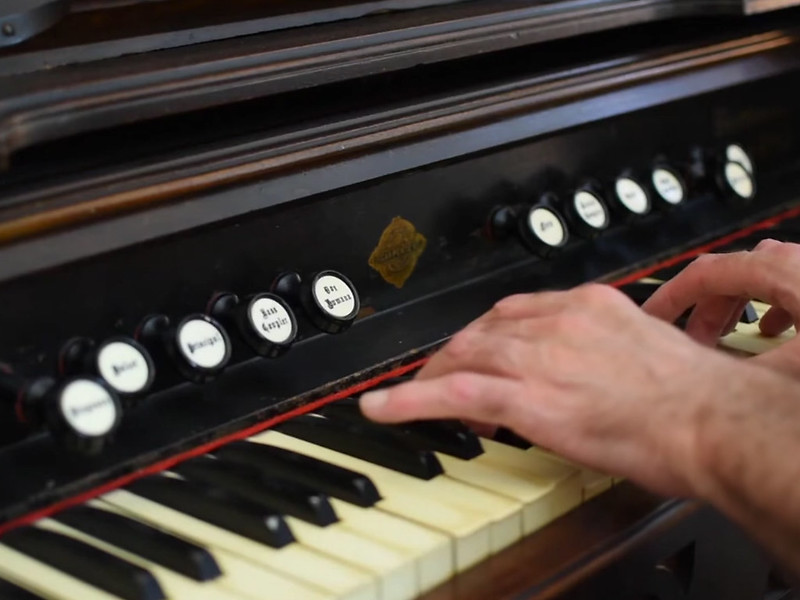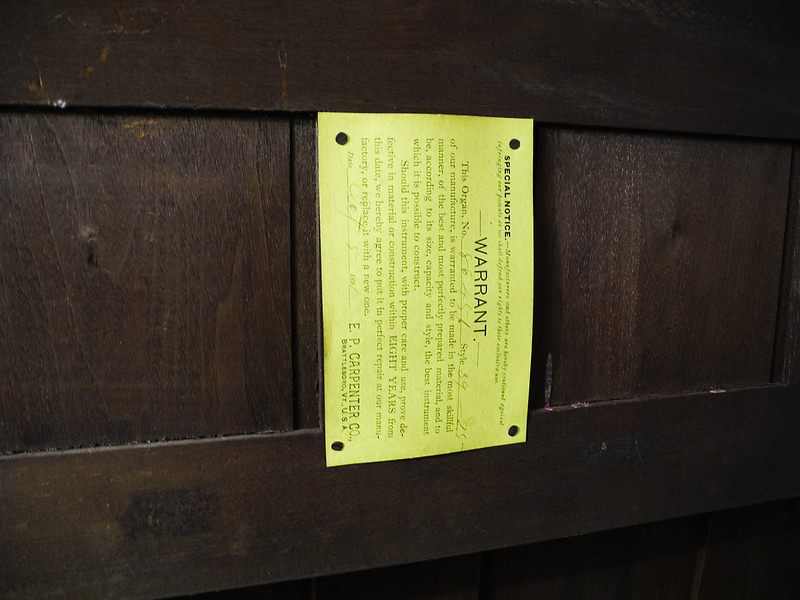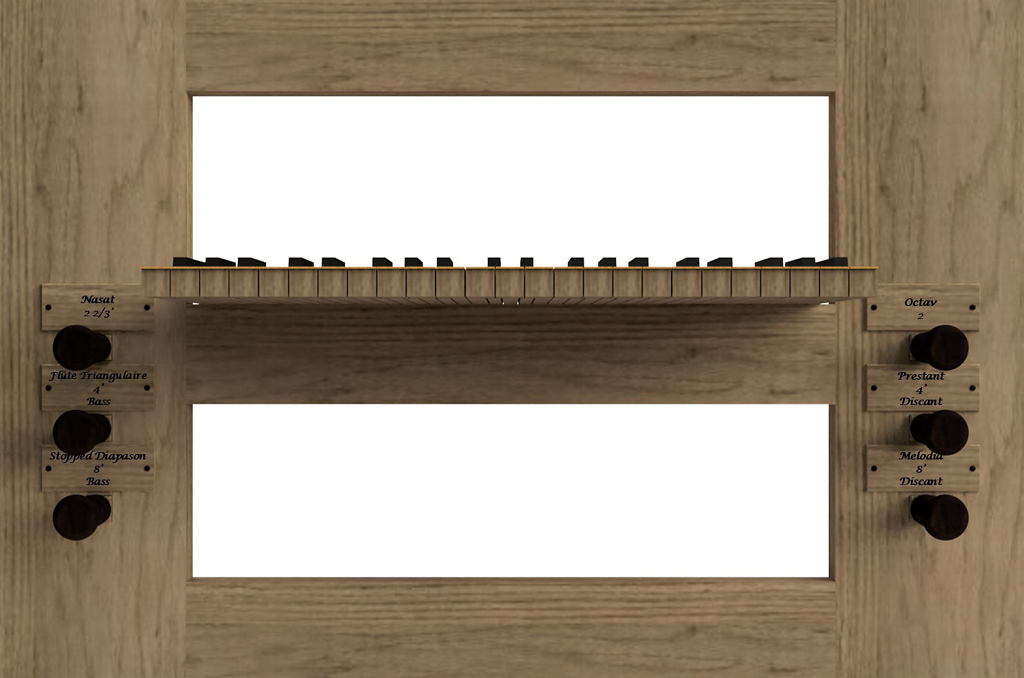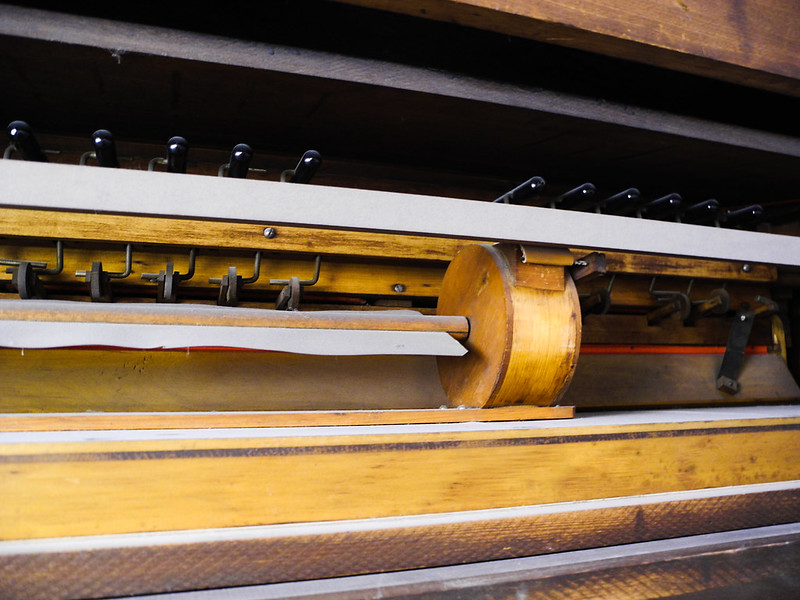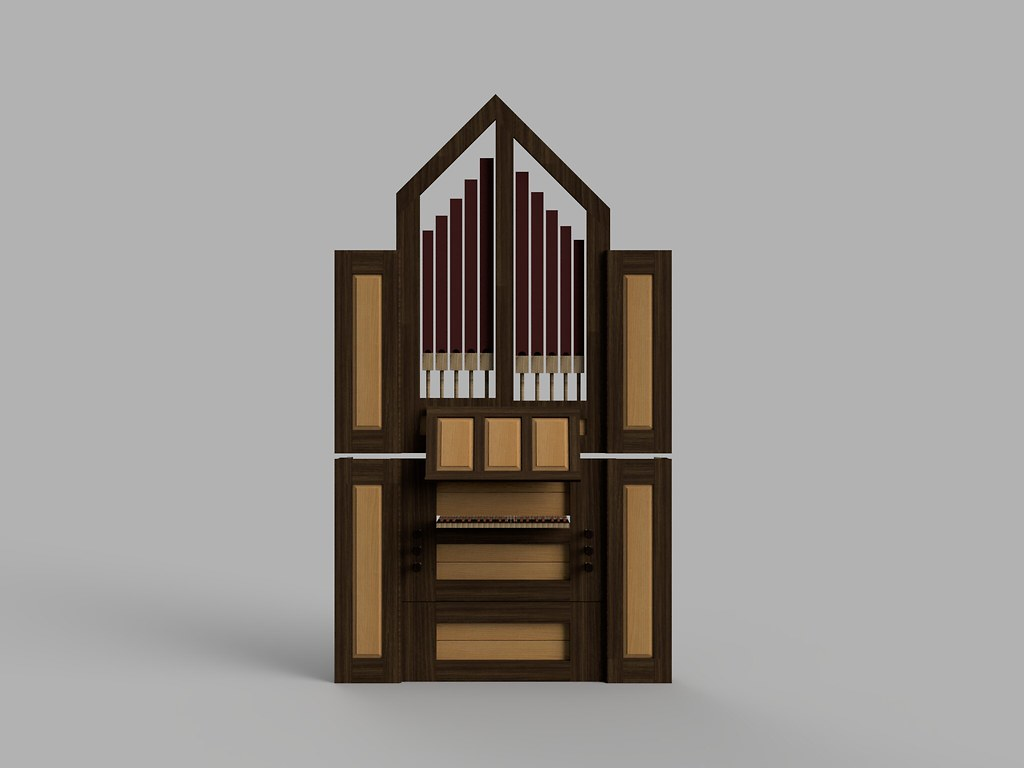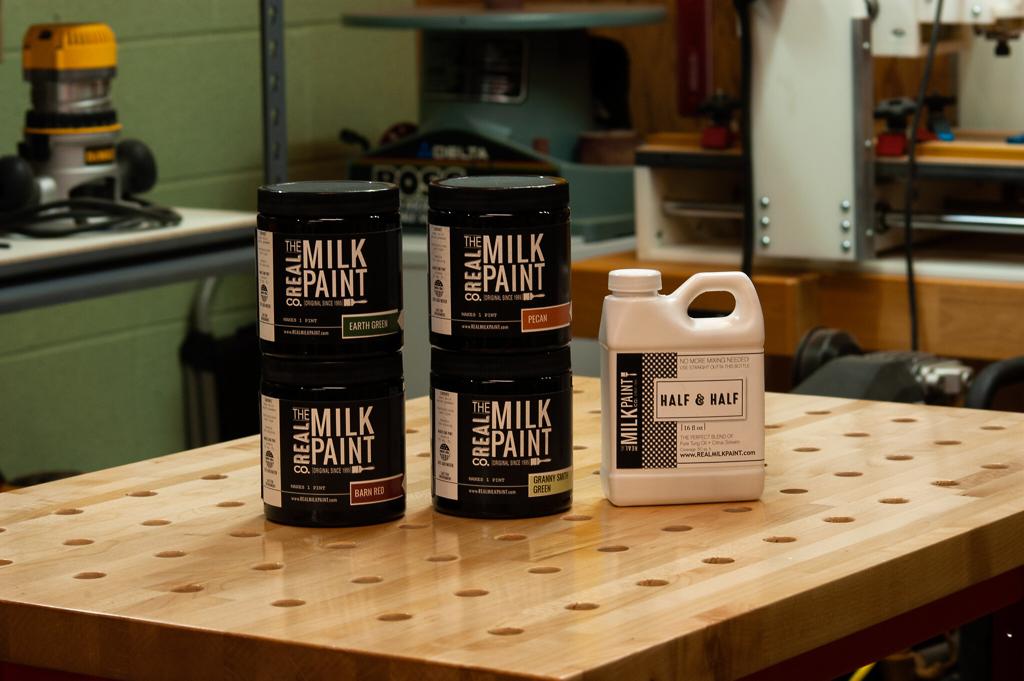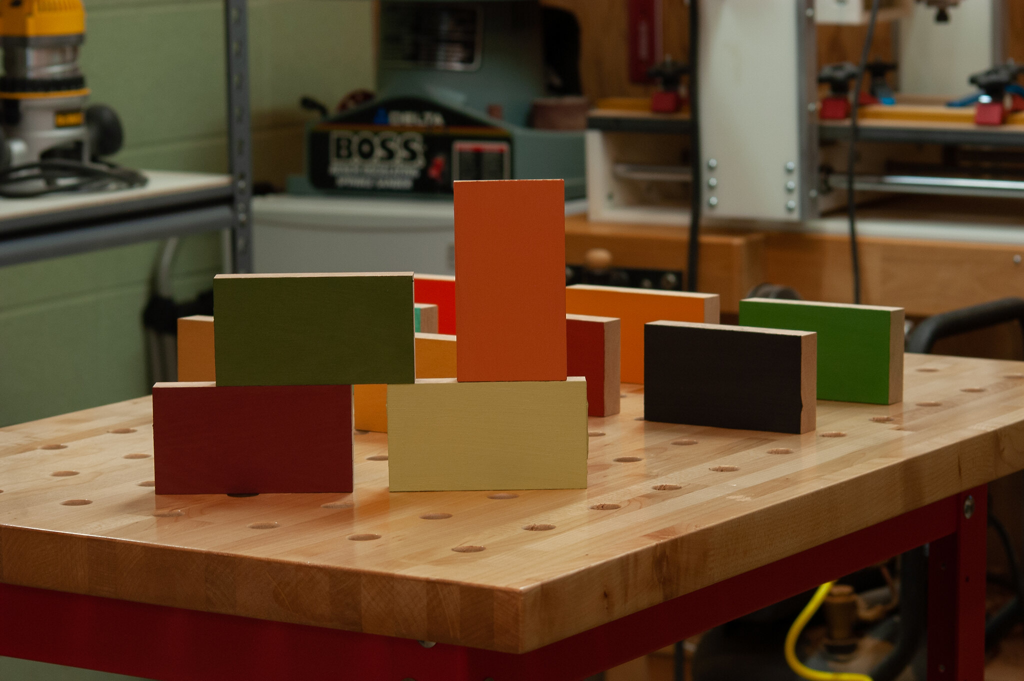A Rabbit Hole that's Not
![]() September 13, 2025 18:15
September 13, 2025 18:15
This is the eighth post published to a blog where I conduct a design study that conceptually builds a very real church, an organ they didn't ask for, using pipes taken from their existing mid-industrial era gallery organ. This design study provides me with the opportunity to develop, if only on paper, an example of my 43-note continuo for a space I am familiar with, using material I am familiar with. I was an organist there for eight years.
If you are new to my project, start here and work your way up.
During the pandemic, people were busking at home and posting their music videos online. I wanted to do the same by playing simple hymns on my reed organ, especially after seeing Eddie Vedder perform "River Cross" on a pump organ as part of the One World: Together At Home livestream event. I own a parlor organ made in 1891 by the E. P. Carpenter Company of Brattleboro, Vermont. I was unfortunately late to the party and behind on new projects, so I only posted a couple of videos. Too bad too, because the reed organ imparts an honest quality to period music as played on period-specific instruments. Hymns like "Amazing Grace" were perfect for the dark winter indoor days of the pandemic, too.
American parlor organs built during the later nineteenth century often divide their stops at tenor-f. The tonal resources offered in the bass and treble are usually different, yet they complement each other. This week, I decided to replicate that aspect of the reed organ by placing pipes in the tonal scheme of my 43-note continuo, not by traditional convention, but where I feel they belong and by utilizing them for what they do best. That way, I have timbres available where needed to create a different tonal topography than what an organist is typically used to, yet one that is fundamentally sound. Doing so opens up opportunities for crafting diversity in tonal design by using pipe set variations that would otherwise not be likely found in a small instrument.
Stopped Diapason 8' Bass
Melodia 8' Discant
Flûte triangulaire 4' Bass
Prestant 4' Discant
Nasat 2 2/3'
Octav 2'
My basic registration when playing the Carpenter is a Diapason stop in the bass and a Melodia stop in the treble. Of course, being a reed organ, there's not much difference between the two. However, the implication is that these are two distinct tonal stops. And yet, they provide the primary 8' pitch along the entire compass. My point? If the parlor organ builders did it, I can do it too.
My 43-note continuo is not a conventional organ built along traditional lines. By introducing parlor organ concepts into its design, I further build on tradition, but on tradition that must evolve to remain relevant.
Posted September 13, 2025 18:15
Add Your Comment
Reuse and Recycle: The Story of a 43-Note Build
by Steve Panizza
Recent Blog Entries
Archive
